by Noel Kingsbury
Reprinted with permission of the author from New Small Garden, Quarto Publishing, September 2016.
Plants make a garden. There are gardens constructed without plants, but the absence of green living things in a space dubbed a ‘garden’ is more often than not a gimmick. For most people, a garden is inconceivable without plants, and for many the possession of a garden is a necessity in order to grow them, either to admire, to eat – or indeed both.
We shall consider plants in two parts. The next chapter will look at choosing plants, which first and foremost must focus on choosing the right plants for your garden. Firstly, though, we will look at plants more holistically – as vegetation. Plants rarely grow in isolation, but almost inevitably in communities of some complexity, and are best understood in terms of the context of the whole vegetation. Understanding these communities may be the task of ecologists, but the home gardener has a lot to learn from a basic appreciation of them too – the owner of the small garden especially.
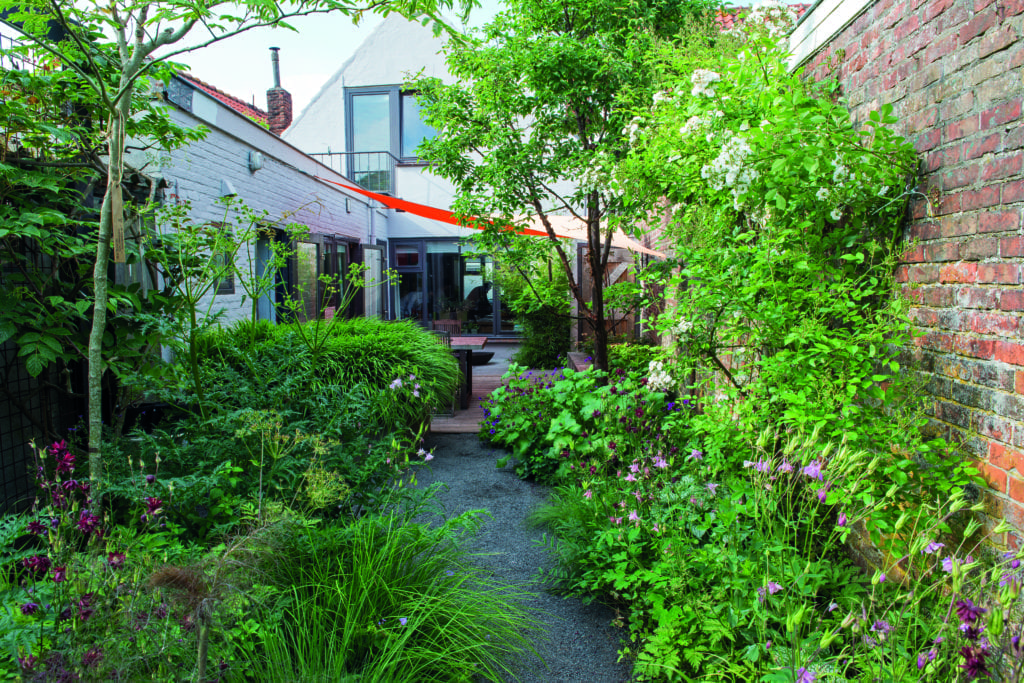
Known as ‘pipeline gardens’ in Holland, long narrow plots are common in many urban areas. Here self-seeding Aquilegia vulgaris has distributed itself amongst a variety of other perennials and grasses, many of them chosen primarily for foliage. Design by Tom de Witte. Photo: Maayke de Ridder
Understanding plant communities involves seeing how plants fit together, very often in distinct layers. These layers may be interpreted in spatial terms (i.e. visually) or temporal (i.e. though time). If the gardener can learn to fit plants together effectively they will be able to make the most of a small space. This may mean squeezing a huge amount of plant diversity into a small garden, or it may mean simply choosing a small number of plant species which will make a cleaner and more graphic impact, with the minimum of maintenance.
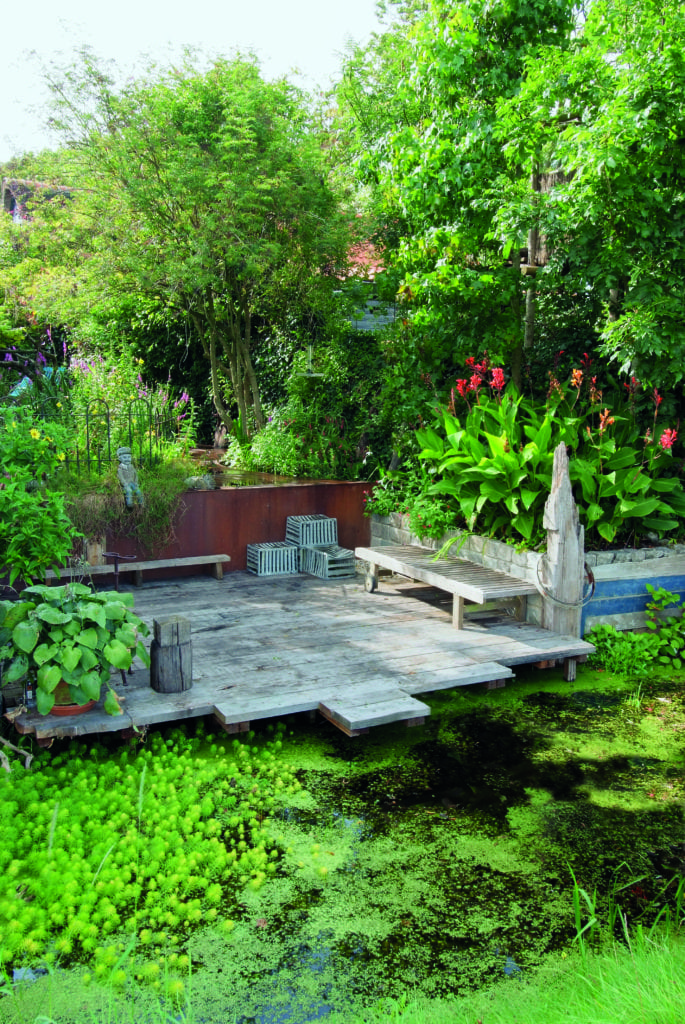
Sturdy recycled timber decking is cantilevered out over a canal. The planting is a mix of Dutch native and garden species; the seating area is at the end of narrow garden largely given over to planting. Design: Meneer Vermeer Tuinen. Photo: Maayke de Ridder
One of the best ways to appreciate plant communities and the way that they organise themselves into layers is on a walk in a natural or semi-natural environment. A forest is a good place to start. Here it can be seen how the trees form a canopy, much of which is at a similar height. On the forest floor will be (usually) another layer of plants, which by necessity are shade-tolerant. Below this will very often be another layer, that of very small plants such as mosses. Very often there will be an additional layer, an understorey made up of shrubs or small trees which grow, discontinuously, beneath the taller ones. At the very edge of woodland, a much more complex layering can be seen. Here, in much lighter conditions, shrubs tend to dominate what is known as a ‘woodland edge’ habitat. Often there is a rich diversity of climbing plants and perennials too. Smaller plants flourish beneath larger ones, and smaller ones beneath them. It is very worthwhile to spend time looking at how all these plants mesh together. Woodland edge habitat can be a good analogy for the border in the garden at home – a location where a large number of plant species can survive in close proximity.
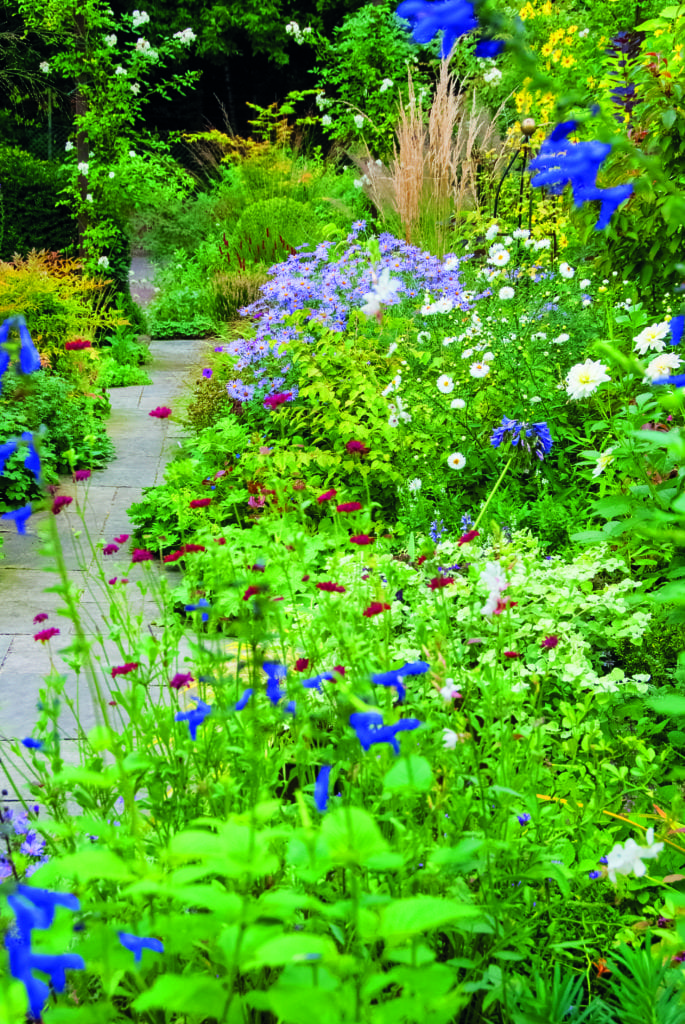
A tightly planted border ensures a long season of interest and plenty of cover for invertebrates. A diversity of plant lifecycle helps ensure visual richness: half-hardy Salvia guarantica ‘Blue Enigma’ and Dahlia ‘Nathalie’s Wedding’, long-lived perennial Aster x frikartii ‘Mönch’ and short-lived but self-seeding Knautia macedonica. Design/owner Lumine Swagerman. Photo: Maayke de Ridder
Plants growing in natural environments organise themselves into layers on ecological principles – shade tolerators beneath sun lovers etc. In the garden it is also useful to think about ‘visual layering’, how plants might be layered in order to create an attractive composition. Visual layering is often about how to show plants off at their best, in contrast to the often confusing picture which nature offers.
Getting to Grips with Trees
Trees, being the visually most dominant plants on the planet, seem the obvious place to start. For the owner of the small garden they can be a blessing or a curse, or sometimes both. Their shade may be welcome in the heat of summer, or it can cast a depressing pall across your enjoyment of your plot and restrict what you can grow. A tree in flower can be a magnificent sight, especially in spring, although its shade may be a burden for the other eleven months of the year.
More often than not, this uppermost layer of our garden ecology is not there of our choice. We have to live with the trees that others have planted and make the most of the environment they create. We need to look at this before considering a more positive subject – choosing a tree for a small garden.
Trees have three main ecological impacts on their immediate environment.
- They cast shade. This may be year long, as is the case with evergreens and conifers. Little will grow beneath them. Deciduous trees usually allow something to grow beneath them.
- They extract moisture from the soil during the growing season, so making the ground dry.
- They also extract nutrients from the soil, making it more difficult to grow plants beneath them.
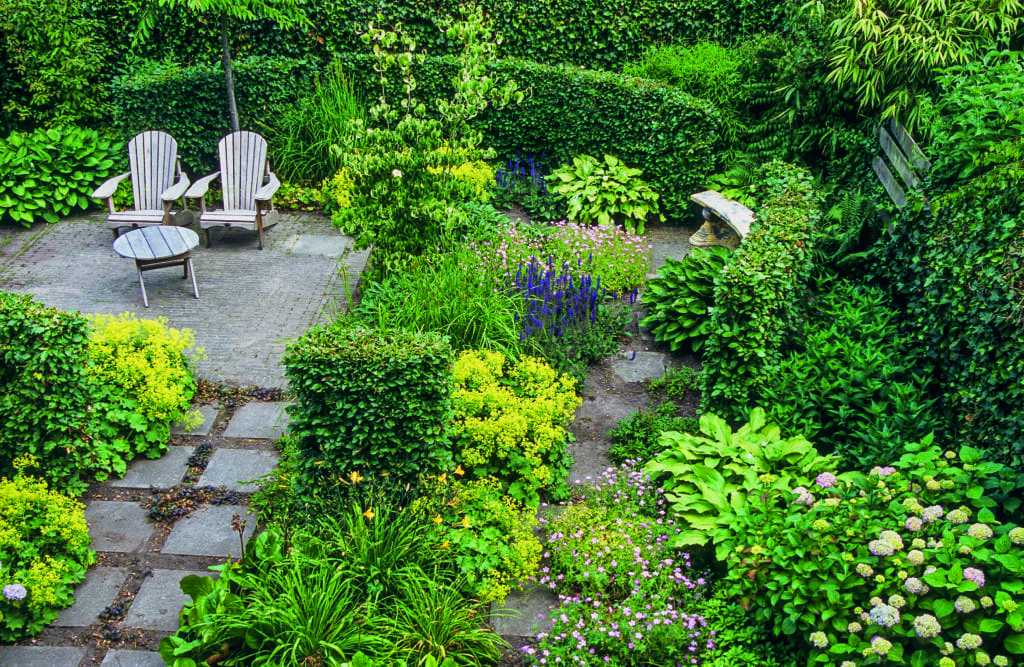
Discrete formality in the form of beech hedging provides a framework in which a variety of perennials fill space and provide a good soil covering canopy. This is an example of classic Dutch modernism. Design/owner: Marianne Blaauwboer, Petra Koetsier. Photo: Maayke de Ridder.
Plants need the three main inputs which trees restrict: light, water, nutrients. If soil moisture and nutrients are high, but light restricted, a wide range of plants, including many thought of as sun-lovers may thrive well enough. With shade, and lower levels of moisture and nutrients plant choices will be restricted to shade-tolerant plants, often referred to as ‘woodland’ species, for these naturally grow in wooded environments. With low levels of all three main inputs, we have dry shade, renowned as the worst place to grow anything. Only a few tough evergreens, such as English Ivy (Hedera helix) will thrive. Some situations offer shade, reasonable nutrients and moist (but not waterlogged) soil; this is a special environment which enables the gardener to grow a choice and special range of plants – ferns and some wonderfully lush-looking woodland species.
Trees can be broadly divided into two ecological categories: the long-lived trees of mature forest and short-lived pioneer species. The latter are those which grow rapidly in open spaces – hence ‘pioneer’. Pioneer species are usually smaller and cast less dense shade, making them more suitable to have in smaller gardens. Some pioneers however, such as birches (Betula spp.), have dense surface rooting systems which make it difficult to grow anything beneath them; others such as cherries (Prunus spp.) and crab apples (Malus spp.) do not create this problem.
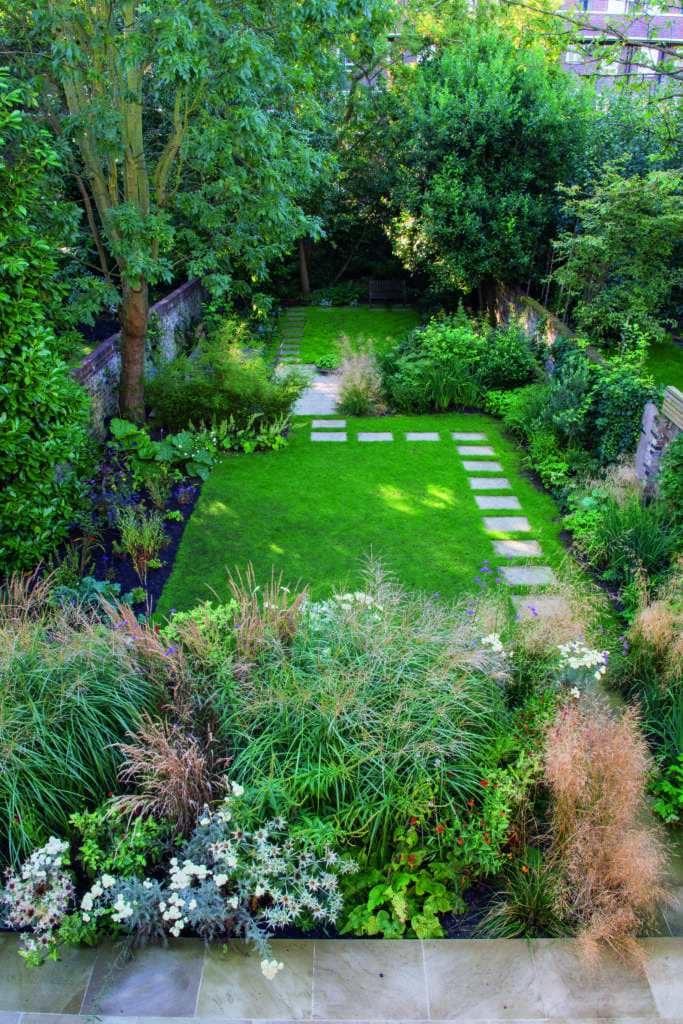
Contemporary perennial planting with a high proportion of grasses is developed in the sunny end of a small city garden. Shade tolerant perennials take over towards the rear. Design/owner: Joanne Bernstein. Photo: Maayke de Ridder.
Mature forest trees are more likely to create problems for garden owners, as they cast a denser shade and their roots are more likely to dominate the soil. An additional impact on their immediate environment is the annual autumnal deposit of leaf litter. This varies in how much it inconveniences the gardener, from the heavy and slow-to-decay leaves typical of maples (Acer spp.) to the lighter, rapidly decaying and nutrient-rich leaves of oaks (Quercus spp.).
Most trees are naturally found in woodland, growing cheek by jowl with others. Take a walk through a woodland however and it should be obvious that there is considerable variation in the size and habit of mature trees. While the canopy will usually be dominated by similarly sized large trees there is very often an understorey of more scattered, shorter species. This is the first of the layers of vegetation we are going to consider as being useful for the small garden owner. Understorey trees and shrubs are used to growing in some shade – indeed many are evergreen, which enables them to use light and photosynthesise through the winter, e.g. Camellia spp. and many hollies (Ilex spp.). Others are deciduous but benefit from being out of full sunlight and particularly out of the wind, e.g. many cherries, dogwoods (Cornus spp.) and many Asian maples (Acer spp.).

About the Author
Dr. Noel Kingsbury is internationally known as an innovator and author. He has worked on both private gardens and public spaces developing nature-inspired planting, and has written about garden design, green roofs, and the politics of gardening. A great believer in using science to inform our gardening, he completed a PhD with the University of Sheffield in 2008 with a focus on the selection and management of ornamental perennials. In addition to taking on his own design projects, Dr. Kingsbury writes for the UK and US garden press and has written 20 books. His latest publication, Plant Selection: Learning From Nature is a reference for landscape architects and designers to help select plants that are ecologically suited to the site. In between traveling widely, and continuing his plant research, he gives plants and gardens trial runs at his home on the England/Wales border.
***
Each author appearing herein retains original copyright. Right to reproduce or disseminate all material herein, including to Columbia University Library’s CAUSEWAY Project, is otherwise reserved by ELA. Please contact ELA for permission to reprint.
Mention of products is not intended to constitute endorsement. Opinions expressed in this newsletter article do not necessarily represent those of ELA’s directors, staff, or members.

